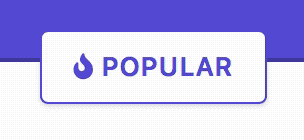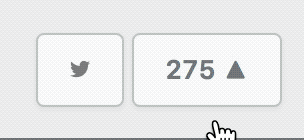thread.soy - the best tech Twitter threads
Today I did a quiet release of thread.soy. It’s a website devoted to curating the best threads on Twitter. Users can contribute threads they like, vote on threads, and browse all-time popularity lists. It took about a week to build.
In the first 12 hours, @threadsoy is up to 47 followers, and the website’s had 906 users with 1,906 page views. I’m curious to see how that grows over the next few weeks.
What turned out well?
I was originally going to give thread.soy a brutalist design style— with a bit more of a sense of humour. But as I got into the project, I discovered that I didn’t feel good about displaying other people’s content alongside too much (potentially inappropriate) design personality.
This restriction meant I had to discover a new, more considerate design and colour palette. I think I’m happier with this than the original brutalist attitude.
My favourite thing is the buttons.


I also like how some of the pages turned out.

I still need to improve on the typography of the actual thread text—it’s super important but currently feels very ”first draft.”
How do you build a web app in a week?
- Cut scope. Ruthlessly.
-
Know your tools.
This is a simple Node.js Express web application with a Postgres database. It uses Handlebars templates, Sass for CSS, and plain no-framework front-end JS. I’ve used them dozens of times, so I could turn this project around pretty quickly.
-
Be wise in your code-reuse battles.
Shock and horror: I copy and pasted a shit tonne of code for this project. The question to ask is ”Will these two things always change together?” If yes, and it’s costly for them to be separate, refactor that code to be shared. If it’s not costly for them to be separate—or the additional abstraction adds no value—you’re setting yourself up for pain by overly refactoring. Your codebase is going to go through fundamental change in the early phase of a project—there’s no point adding indirection or layer of abstraction before the problem domain is fully conceptualized.
What did I learn?
-
Don’t include ProductHunt or Twitter marketing plan.
Seriously, just take those words out of your vocabulary.
I re-learn this lesson every time I make something. Those sites don’t provide that much lasting traffic, and they kill your motivation if they don’t go well. I’ve had past projects get that virality, and plenty of projects that haven’t. Your growth strategy can’t rely on initial popularity.
-
I probably should have used an ORM.
Minor technical note: out of curiousity, I just ended up doing raw SQL queries instead of using an ORM like Sequelize. Turns out, Sequelize is pretty nice.
💅 Vanilla – hide icons from your Mac menu bar for free
🚀 Rocket – super-fast emoji shortcuts everywhere on Mac… :clap: → 👏
⏳ Horo – the best free timer app for Mac
📂 FastFolderFinder – a lightning-fast launchbar app for folders and apps
📖 Kubernetes – my book on Kubernetes for web app developers
😄 Emoji Bullet List – easily emojify your bullet point lists (like this one!)
Jump on my email list to get sent the stuff that’s too raunchy for the blog.
(Seriously though, it’s an occasional update on apps I’ve built and posts I’ve written recently.)